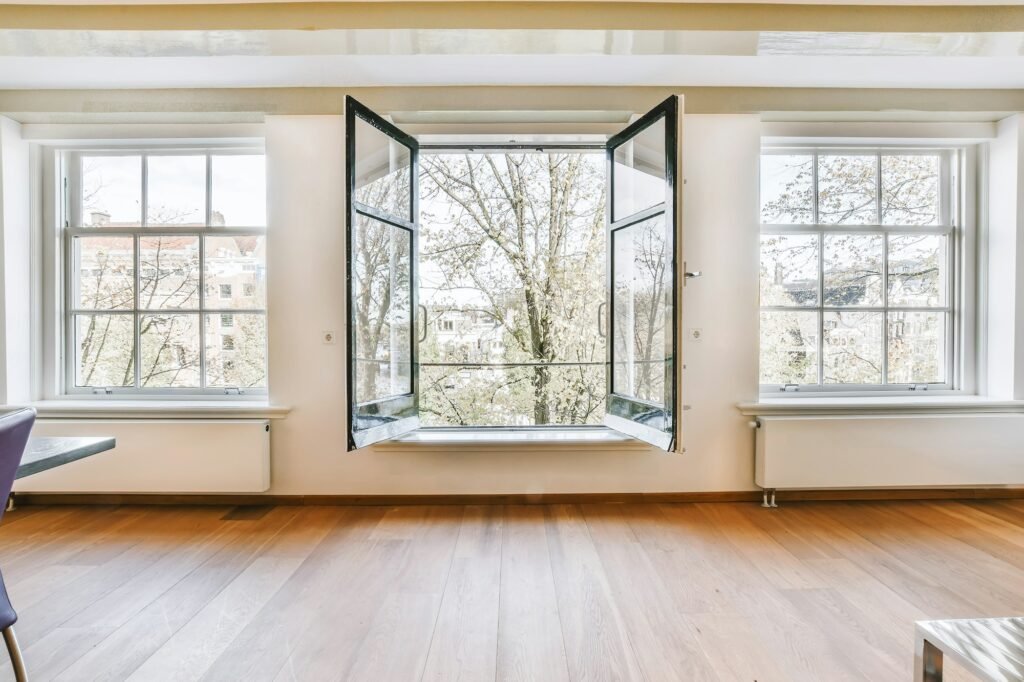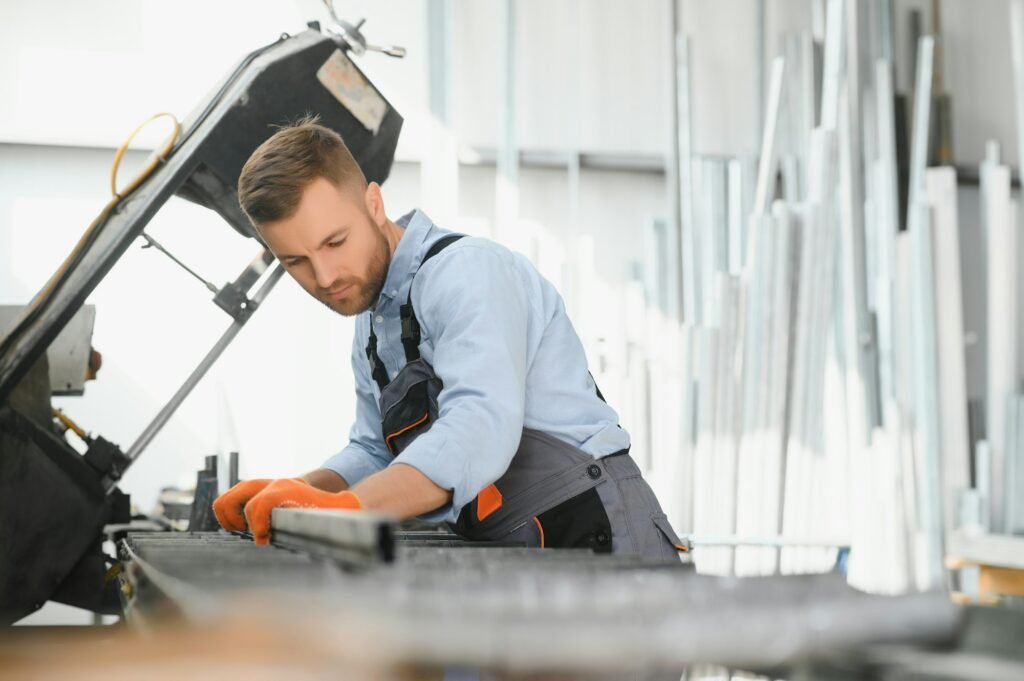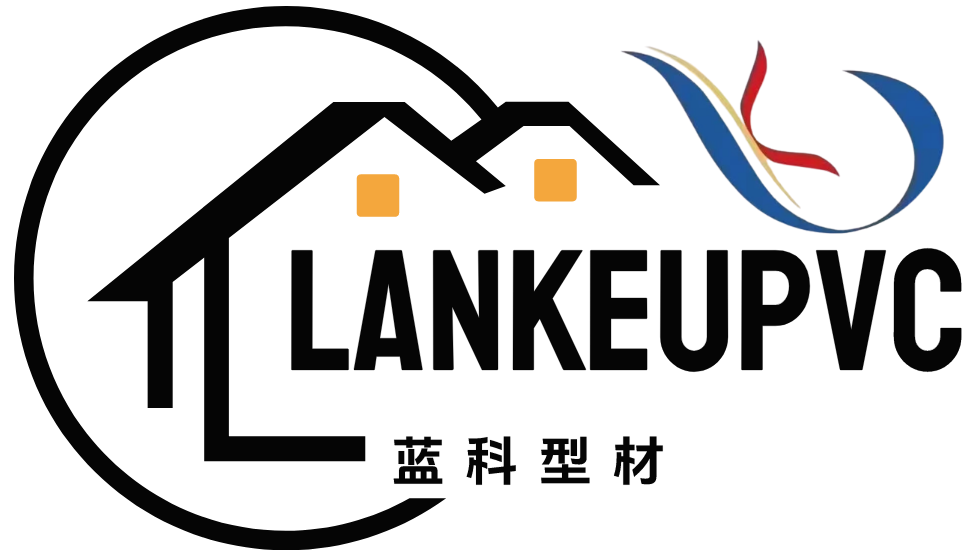Ingredients in uPVC Profile
Unplasticized Polyvinyl Chloride (uPVC) profiles are widely used in the construction of windows and doors due to their durability, low maintenance, and energy efficiency. The composition of uPVC profiles involves a combination of various materials that contribute to their unique properties. Here’s a detailed breakdown of the ingredients typically found in uPVC profiles:

1. Polyvinyl Chloride (PVC)
The primary component of uPVC profiles is Polyvinyl Chloride (PVC), a synthetic plastic polymer. PVC is created through the polymerization of vinyl chloride monomers, forming long chains of molecules that provide the base material for uPVC profiles.
2. Stabilizers
Stabilizers are added to the PVC to enhance its resistance to heat and ultraviolet (UV) radiation. These stabilizers prevent the material from degrading when exposed to sunlight and high temperatures, ensuring the longevity and color retention of the profiles. Common stabilizers include:
- Lead-based stabilizers: Historically used but now largely phased out due to health and environmental concerns.
- Calcium-zinc stabilizers: A safer alternative to lead-based stabilizers, providing excellent thermal stability and weather resistance.
- Tin-based stabilizers: Another alternative that offers good heat stability and is often used in high-performance applications.
3. Impact Modifiers
Impact modifiers are added to improve the toughness and impact resistance of the uPVC profiles. These additives help the material withstand physical stresses and impacts without cracking or breaking. Common impact modifiers include:
- Acrylic-based modifiers: Enhance the impact resistance and durability of the profiles.
- Chlorinated polyethylene (CPE): Provides excellent impact resistance and weatherability.
4. Fillers

Fillers are used to enhance the mechanical properties of the uPVC profiles and reduce production costs. They help improve the rigidity and strength of the material. Common fillers include:
- Calcium carbonate: Widely used as a filler to increase stiffness and reduce costs.
- Talc: Another filler that enhances the rigidity and thermal stability of the profiles.
5. Lubricants
Lubricants are added to the uPVC compound to facilitate the extrusion process during manufacturing. They help reduce friction and prevent the material from sticking to the machinery. Common lubricants include:
- Paraffin wax: Used to improve the flow properties of the PVC during extrusion.
- Metallic stearates: Such as calcium stearate and zinc stearate, which act as internal and external lubricants.
6. Pigments
Pigments are added to the uPVC compound to provide color and UV resistance. These pigments ensure that the profiles maintain their appearance and do not fade or discolor over time. Common pigments include:
- Titanium dioxide (TiO2): A white pigment that provides excellent UV resistance and color stability.
- Iron oxide: Used for red, yellow, and brown colors.
- Carbon black: Used for black and grey colors, also providing UV protection.
7. Processing Aids

Processing aids are added to improve the melt flow and processing characteristics of the uPVC compound during extrusion. They help achieve a smooth surface finish and consistent profile dimensions. Common processing aids include:
- Acrylic-based processing aids: Enhance the melt strength and surface quality of the profiles.
- Methacrylate-based processing aids: Improve the fusion and processing characteristics of the PVC compound.
8. UV Absorbers
UV absorbers are added to protect the uPVC profiles from the damaging effects of ultraviolet radiation. These additives absorb UV light and prevent it from degrading the material. Common UV absorbers include:
- Benzotriazole: A UV absorber that provides excellent protection against UV radiation.
- Hindered amine light stabilizers (HALS): Enhance the UV stability and weather resistance of the profiles.
9. Antioxidants
Antioxidants are added to prevent the oxidation and degradation of the uPVC profiles during processing and throughout their lifespan. These additives help maintain the material’s mechanical properties and appearance. Common antioxidants include:
- Phenolic antioxidants: Provide thermal stability and prevent oxidative degradation.
- Phosphite antioxidants: Enhance the processing stability of the PVC compound.
Manufacturing Process of uPVC Profiles
The manufacturing process of uPVC profiles involves several key steps to ensure the final product meets the required specifications and performance standards. Here’s an overview of the typical manufacturing process:

1. Raw Material Mixing
The raw materials, including PVC resin, stabilizers, impact modifiers, fillers, lubricants, pigments, processing aids, UV absorbers, and antioxidants, are accurately weighed and mixed to form a homogeneous compound. This mixture is then fed into an extruder.
2. Extrusion
The mixed compound is heated and melted in the extruder, where it is forced through a die to form the desired profile shape. The extrusion process ensures that the profiles have consistent dimensions and a smooth surface finish.
3. Cooling
The extruded profiles are immediately cooled using a water bath or air cooling system to solidify the material and maintain the profile’s shape. Proper cooling is essential to prevent warping and ensure dimensional stability.
4. Cutting and Machining

The cooled profiles are cut to the required lengths and machined to create the necessary features, such as grooves, holes, and notches, for assembling windows and doors. Precision cutting and machining ensure that the profiles fit together accurately during installation.
5. Reinforcement
Steel or aluminum reinforcements are often inserted into the hollow chambers of the uPVC profiles to enhance their structural strength and rigidity. This reinforcement is particularly important for larger windows and doors that need to withstand higher loads and stresses.
6. Quality Control
The finished profiles undergo rigorous quality control checks to ensure they meet the required standards for dimensions, mechanical properties, and surface finish. Tests may include checking for impact resistance, weatherability, and color consistency.
7. Assembly
The uPVC profiles are assembled into window and door frames, incorporating glazing, gaskets, and hardware components such as handles, hinges, and locking mechanisms. The assembly process ensures that the final products are functional, secure, and aesthetically pleasing.
8. Packaging and Distribution
The assembled windows and doors are carefully packaged to protect them during transportation and storage. They are then distributed to retailers, builders, and homeowners for installation in residential and commercial buildings.
Conclusion

uPVC profiles are a versatile and durable material used extensively in the construction of windows and doors. The composition of uPVC profiles includes a combination of PVC resin, stabilizers, impact modifiers, fillers, lubricants, pigments, processing aids, UV absorbers, and antioxidants. These ingredients work together to provide the profiles with their unique properties, such as strength, weather resistance, and low maintenance.
The manufacturing process of uPVC profiles involves precise mixing, extrusion, cooling, cutting, machining, reinforcement, quality control, assembly, and packaging. This meticulous process ensures that the final products meet the highest standards of performance and aesthetics.
By understanding the ingredients and manufacturing process of uPVC profiles, homeowners and builders can make informed decisions when selecting windows and doors for their projects. The benefits of uPVC profiles, including energy efficiency, durability, and ease of maintenance, make them an excellent choice for modern construction and home improvement.
